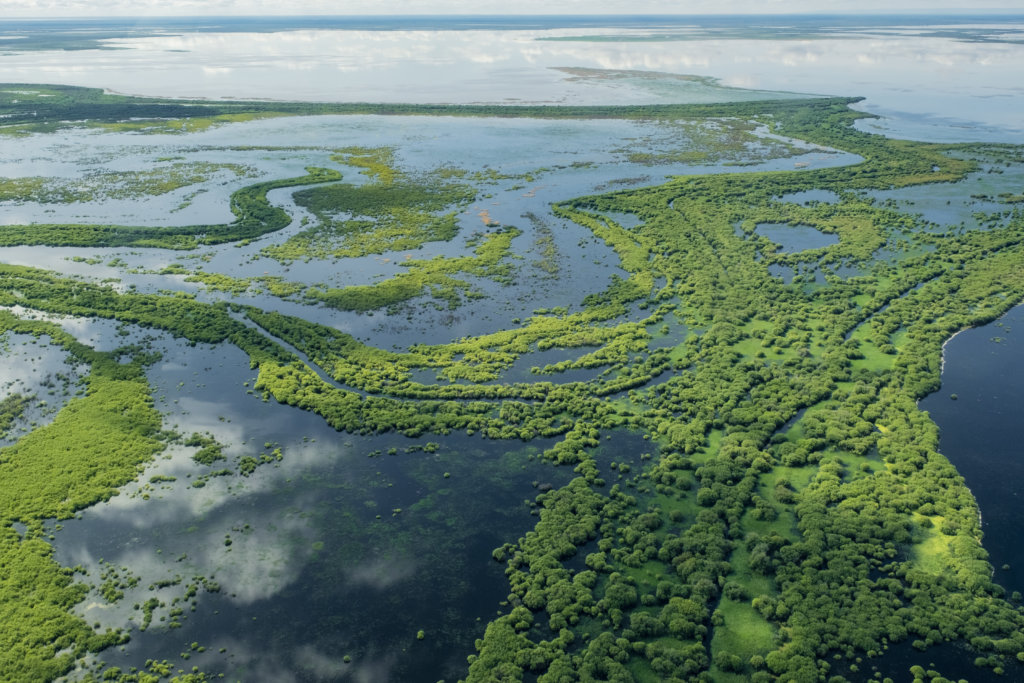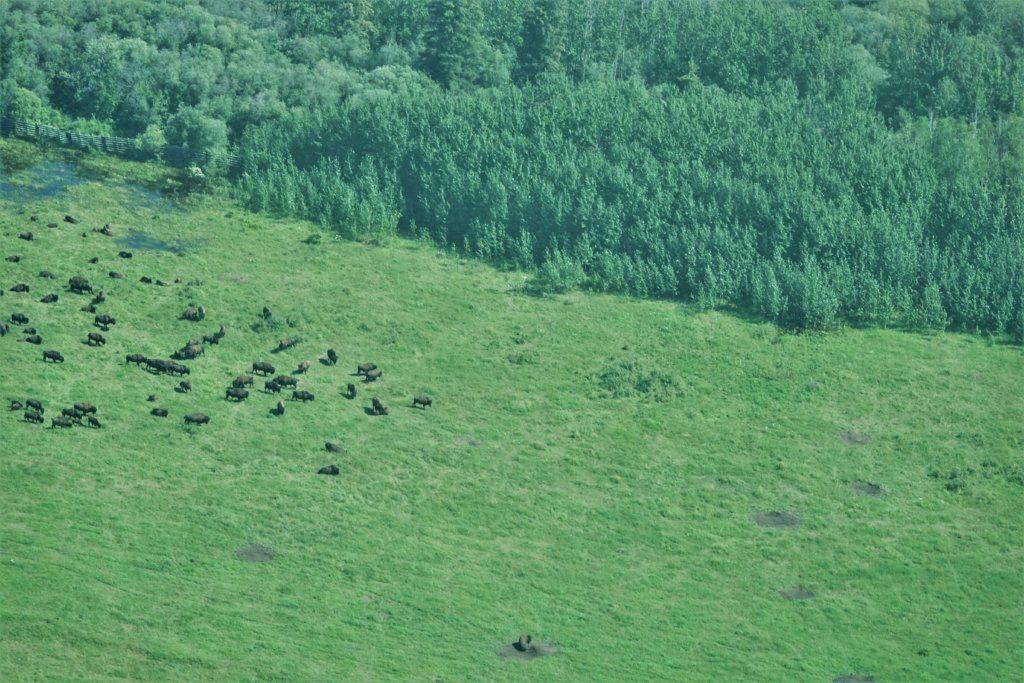(contributed piece by Wood Buffalo National Park)
Kevin Gedling | kevin.gedling@canada.ca | (867) 621-0782

2020 in Northern Alberta was a springtime no one will forget. A perfect storm of snowy conditions across most of the region and all its watersheds combined with a slow but steady melt and higher than average rainfall. In the spring surging waters in both the Peace and the Athabasca Rivers, locked behind significant ice jams, backed up, overflowed and caused tremendous damage to property in many places.
In April and May, muddy rivers experienced a quick melt as cold winter temperatures gave way to a warm spring—which brought river levels up quickly and caused the ice to fracture and fragment. While the floods were huge, they brought benefits too. Benefits which lasted the entire summer season and may do so for years to come. So the question is, since when is a flood a positive thing on the landscape?
One of the World’s Largest Freshwater Deltas
The Peace Athabasca Delta in Wood Buffalo National Park is one of the world’s great freshwater marsh and pond ecosystems. The largest such ecosystem in North America, it’s home to hundreds of lakes and thousands of kilometers of combined shorelines. It’s truly a marvel on Earth and it also depends on flooding.
Hundreds of thousands of shore birds and waterfowl, hundreds of wood bison and unique-on-the-planet species at risk depend on the delta for refuge and survival. This critical importance is recognized as a RAMSAR wetland and critical component of Wood Buffalo’s status as a UNESCO world heritage site. The lakes, ponds and extensive grasslands of the delta carry the traits of northern boreal forests and interior plains in a unique landscape sculpted by glaciers around 10,000 years ago. All of these factors help to make the PAD unique.

The Lakes and Ponds are Interconnected
As the Peace and the Athabasca, two of Canada’s great rivers, come together, how waters flow from place to place is being studied. On the surface there are creeks and channels that carry the water and below the surface, there’s water flow through the ponds and sedges much like a large, unseen filter. When the waters are high enough, inter-connected river channels that usually flow northwards can often swell and reverse course. This happens when water is backed up behind huge spring ice jams or when rivers are high enough from yearly floods
Muddy flood waters are comprised of nutrient rich silts that become the building blocks for all the area’s plant and animal life. All the woody debris carried down the river ranges from sticks to flooded forests, and comes to rest on swollen riverbanks and flats. The muds themselves replenish the soils and plants, grasses, sedges and willows. In turn, these plants thrive and create even better food and a place to live for the delta’s wildlife. And all the woody flotsam, big or small, makes for excellent habitat for aquatic wildlife and waterfowl. In the spring and summer of 2020, traditional land-users remarked at how long it had been since the water had been at these levels. Even though many cabins out on the land were partially inundated with floodwaters, there was a local understanding about what the floods meant for the delta. Parched grasslands that haven’t seen these kinds of water in years had become green and aquatic wildlife like muskrats are flourishing, revisiting and reclaiming waterways.

What’s happening in the delta these days?
Most of the Peace Athabasca Delta is included in today’s Wood Buffalo National Park and managed by Parks Canada. But understanding the PAD and all of it’s intricacies takes time. Since long before it was ever a park, it has been the traditional territory for Cree, Chipewyan and Metis peoples. People whose knowledge is critical to understanding and protecting the PAD. Together with these Indigenous communities, Parks Canada staff monitor ecological indicators ranging from water isotopes to the diversity of bird songs and from muskrat dens and bison numbers. Through a wide range of programs and projects done in collaboration, we’re able to check and track the pulse of the delta and its wildlife.
So what’s the end result?
It’s going to be a long time before we really understand how the floods of 2020 fully benefitted the delta. Questions like: Have wildlife changed their patterns? Has the delta really seen a rejuvenation? Or is this a one-off year or a cycle of more wet years to come? More research and studies of the PAD and all it’s environmental indicators will, over time, tell the story. But one thing’s for certain—in the story of the PAD overall, the wet summer of 2020 will go down as one of it’s most interesting chapters.
If you’d like to keep up on what’s happening in the delta or Wood Buffalo National Park, you can:
· Follow us on Facebook using @ParksCanadaNWT
· Check the Discover section of the Parks Canada website
· Call or visit the Fort Chipewyan office at number: 780-697-3662